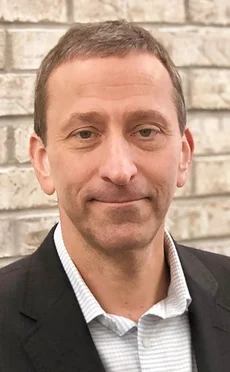
This article was paid for by a contributing third party.More Information.
Conduct risk: be proactive, stay ahead

As concerns around conduct risk abound, firms need to arm up and tighten surveillance to stay ahead. Lee Garf, general manager at NICE Actimize, explains why market abuse remains the biggest risk to financial markets firms today
Firms are actively innovating on identifying areas of misconduct as early indicators of potential risk. The shift to remote working, as a result of the Covid‑19 pandemic, has definitely increased risk concerns at various financial firms. The key is to capture communications and enable holistic surveillance, adds Garf.
Today, he says, there is a dramatic acceleration in the shift to cloud to make surveillance foolproof. But how are firms arming up to stay ahead?
Which areas of misconduct pose the biggest risks to financial markets firms?

Lee Garf: Market abuse remains perhaps the most significant risk to financial markets firms. However, firms are exploring how to identify other areas of misconduct as early indicators of potential risk. Firms are working to be more proactive in identifying these risks and putting systems in place that discourage that kind of conduct risk.
How have recent regulations added pressure on firms?
Lee Garf: We’ve seen a significant increase in regulations related to conduct risk. One of the most widely known is the Financial Conduct Authority’s Senior Management and Certification Regime.
What is different about this regulation is that it puts personal accountability on executives, who can now be fined and go to jail if they don’t have proper controls in place. We have not just seen this in the UK; but there are similar regulations in Asia – for example, in Singapore with the Guidelines for Individual Accountability, and in Australia with the Financial Accountability Regime and in Hong Kong.
Even in the US, the Federal Reserve Bank of New York has a requirement regime around governance and culture reform. This is continuing to grow, and we expect further regulations on conduct. There’s a significant increase in the focus of regulators on the area of conduct.
Most firms have been concerned about social/cultural attitudes to remote working – how do they increase these risks?
Lee Garf: There’s no question the shift to remote working, which was caused by the pandemic, really increased risk and concern about risk at various financial firms. There’s no longer only a situation with regulated employees in a room being monitored – both physically and their communications.
Now people are working remotely, and could be using non-approved devices, for instance. There’s a lot of other opportunity for them to commit abuse, so we have seen an increase in monitoring and concern around conduct with remote working.
Have firms put systems in place to reduce these risks as people continue to work from home?
Lee Garf: Yes – the most important thing is to capture communications. What we saw with the shift to remote working was a dramatic increase in the use of platforms such as Microsoft Teams, Zoom and WebEx – so-called ‘unified communication’ platforms, which assist remote working and increase the use of mobile communication devices.
Traditionally most communication devices were desktop-based and in a controlled room. In the current remote environment, it is critical to capture those communications. We’ve seen a significant increase in non-traditional communications capability and company initiatives around the capture of those communications.
Once they’re captured, it’s very important to surveil those communications. There is a trend not just towards the rule- or lexicon-based analysis of communications but towards more anomaly detection, using advanced techniques, such as natural language processing (NLP), machine learning and artificial intelligence (AI).
Have firms’ views of ‘cloud-first’ shifted now they are revisiting disaster recovery plans and seeing how business is evolving?
Lee Garf: Yes, there has been a dramatic shift – or rather a dramatic acceleration in the shift – to cloud, over the past two years. The surveillance area was already moving quickly towards cloud technology, but we have seen an increase. Now, at least for NICE Actimize, virtually every opportunity – new or upgrade opportunities – is a shift to cloud.
The big surprise and big shift was around the communication capture where, until two years ago, virtually no-one wanted to capture voice recordings in the cloud. That has changed dramatically – the shift has really accelerated. Similarly, on the recording capture side most opportunities are cloud-based.
How are AI/machine learning-based systems able to capture and monitor staff activity and detect suspicious, anomalous behaviour?
Lee Garf: First, the cloud provides the ability to scale up, scale down and update to the latest versions and technology. The reason for the shift to cloud is this need for flexibility – especially with the shift to remote working where the number of communication channels has increased dramatically. Those on the cloud were able to adapt more quickly.
Second, once the data is in the cloud, related to scale, we can process very large amounts of data. We’re able to crunch that data in the cloud easily, because we can use the processing power to scale up quickly to do the kind of processing required for next-generation technology such as AI, machine learning, and NLP.
What we’re seeing improve – and what financial institutions are adopting around NLP – is, for example, transcription, where accuracy is higher for a computer than for a human. The shift has finally occurred in the past couple of years where automated transcription and automated detection can be undertaken more accurately than human supervision. That’s one big shift.
Another big shift is the use of machine learning for anomaly detection to identify unusual behaviour. A third area is the reduction of false positives because AI capabilities can be used to predict real positives versus which are fake or false more accurately.
Why do financial institutions need a holistic approach to trade and conduct surveillance? That spans communication, trade and behavioural surveillance – would it be for better overall surveillance?
Lee Garf: Yes – it is required by regulation in multiple jurisdictions, as part of the Dodd-Frank Act in the US, and the second Markets in Financial Instruments Directive – known as Mifid II – in Europe, to be able to provide ‘trade reconstruction’ for financial institutions.
Trade reconstruction is about connecting what people say with what they do. The rationale is that if people are going to collude or commit market abuse, they generally will talk, text, email or chat about it. Then they’ll conduct the abusive activity: trading, for example. Often they’ll brag about it at the end.
So, the key for regulation and investigations is to be able to connect the dots between the communications and the transactions or trades. That’s why firms have been moving steadily towards a more holistic solution where you have all of this information in a single solution. This is facilitated by the cloud.
One of the reasons it’s easier in the cloud is that many of the communication platforms are already cloud-based. So a cloud surveillance solution and conduct solution can connect automatically to Microsoft Teams, Zoom, email or Bloomberg Chat, all of which are cloud solutions. So it is facilitated by having a cloud solution.
On the trade side, cloud solutions can also go directly to the venues and get trade data, for example, directly from exchanges. This is all facilitated and streamlined in the cloud and gives the ability to do this holistically or enables holistic surveillance.
What is NICE Actimize specifically developing in the next 12 to 18 months? How is adoption among financial institutions? Are there still lots of legacy systems out there?
Lee Garf: Yes – we’re seeing a lot of financial institutions upgrading legacy solutions and/or moving to the cloud. Because the total cost of ownership remains important and the cost of cloud is lower – in almost all cases – than internal systems, with pressure on total cost reduction, that’s a shift.
There’s also a shift driving surveillance to the cloud. With new stringent regulations and requirements and new types of abuse, it’s very difficult for legacy platforms to keep up. That’s the other advantage of the cloud: we can quickly update and adapt to new requirements. We’re seeing a lot of activity.
We’re also seeing activity not only on the traditionally active sell side, but also on the buy side, to which regulators have made a significant shift in focus. One major focus area for us is around self-development and the ability for financial institutions to supplement our best-in-class, out-of-the-box analytics, with their own internal analytics.
This is a really big focus area for firms. They want to be able to quickly adapt if a regulator gives them a finding and they need to put a new control in place. The ability to very quickly add that control is something we’ve been working on.
A second area on which we continue to focus is the application of AI for anomaly detection and false-positive reduction, taking advantage of big data. The third area is increasing our out-of-the-box coverage of a full ‘know-your-employee’ approach. That’s the label we’ve been using. With an increase in home and remote working, this is around conduct risk and an amalgamation of different metrics that aggregate into an employee risk score. Know-your-employee is a play on the better known ‘know-your-customer’ standard in the fraud and anti-money laundering spaces.
Sponsored content
Copyright Infopro Digital Limited. All rights reserved.
You may share this content using our article tools. Printing this content is for the sole use of the Authorised User (named subscriber), as outlined in our terms and conditions - https://www.infopro-insight.com/terms-conditions/insight-subscriptions/
If you would like to purchase additional rights please email info@risk.net
Copyright Infopro Digital Limited. All rights reserved.
You may share this content using our article tools. Copying this content is for the sole use of the Authorised User (named subscriber), as outlined in our terms and conditions - https://www.infopro-insight.com/terms-conditions/insight-subscriptions/
If you would like to purchase additional rights please email info@risk.net
